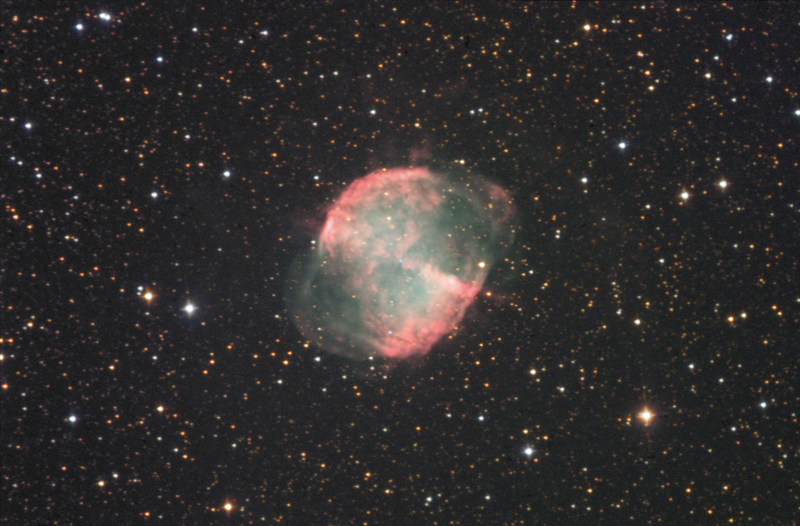|
Description:
|
The Dumbbell Nebula M27 was the first planetary nebula ever discovered. On July 12, 1764, Charles Messier discovered this new and fascinating class of objects, and describes this one as an oval nebula without stars. The name "Dumb-bell" goes back to the description by John Herschel, who also compared it to a "double-headed shot."This planetary nebula is certainly the most impressive object of its kind in the sky, as the angular diameter of the luminous body is nearly 6 arc minutes, with a faint halo extensing out to over 15', half the apparent diameter of the Moon (Millikan 1974). It is also among the brightest, being at most little less luminous with its estimated apparent visual magnitude 7.4 than the brightest, the Helix Nebula NGC 7293 in Aquarius, with 7.3, which however has a much lower surface brightness because of its larger extension (estimates from Stephen Hynes); it is a bit unusual that this planetary is only little fainter photographically (mag 7.6). The present author (hf) was surprized how fine this object was seen in his 10x50 binoculars under moderately good conditions !
|

